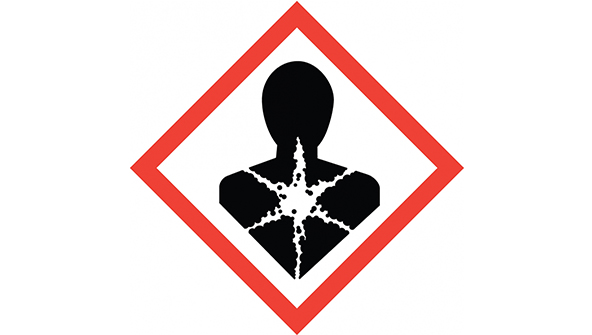The Clean Air Act (CAA) directs the Environmental Protection Agency (EPA) to define “hazardous air pollutants (HAPs)” that may pose acute health hazards, and to impose regulations to reduce those hazards. Controls include permits for “major sources” of HAPs based on “Maximum Achievable Control Technologies (MACT),” and lesser controls for non-major “area sources.” Effective September 10, 2024 EPA has reinstated a policy that an emission source that met major source criteria at the time an applicable MACT became effective is “once in, always in” – even if a source makes binding changes reducing its “potential to emit” below the applicable major source threshold, it still cannot formally requalify as a less-regulated area source. This policy was in force from 1995 until EPA reversed it in January 2018 to allow full reclassification. EPA subsequently codified this approach in a rule issued in 2020. However, EPA has now revised that rule to reinstate “once in, always in.” The rest of this note summarizes CAA requirements for HAP sources, and the latest change.
Read MoreAudit, Compliance and Risk Blog
EPA reinstates “Once in Always in” policy for major sources of hazardous air pollutant emissions
Posted by Jon Elliott on Wed, Oct 09, 2024
Tags: Environmental risks, CAA, clean air, Air Toxics, Environment, Clean Air Act, environmental protection
On March 1, 2024, the Environmental Protection Agency (EPA) revised Accidental Release Prevention (ARP) program rules under the Clean Air Act (CAA). ARP was authorized by the 1990 Clean Air Act (CAA) Amendments, and is often known by its core requirement that targeted facilities prepare Risk Management Programs (RMPs) to prevent and respond to potential catastrophic releases of chemicals. The adoption finalizes an agency proposal from 2022 (it also recounts a long series of proposal dating back to 2014; I wrote about it HERE), in which the Biden-era EPA proposed to many of the narrowing amendments to RMP/ARP enacted in 2019 during the Trump Administration (I wrote about the 2019 changes HERE).
The rest of this note summarizes the new revisions, noting their differences from current rules.
Read MoreTags: Health & Safety, EPA, CAA, chemical safety, Air Toxics, Clean Air Act, Toxics Release
New EPA website compiles agency cancer prevention efforts
Posted by Jon Elliott on Mon, Oct 23, 2023
On September 13, the US Environmental Protection Agency (EPA) added to its website a portal with information about the agency’s many regulatory, research and informational efforts addressing carcinogen hazards and controls. This information supports the Biden Administration’s “Cancer Moonshot.” EPA undertakes carcinogen control efforts by applying legal authority under many of the environmental protection statutes it administers. The remainder of this note summarizes the agency efforts identified on EPA’s new web portal.
Read MoreTags: Health & Safety, EPA, CAA, tsca, CWA, NESHAPs, FIFRA, Healthcare, Illness, Cancer Moonshot
On January 24, the US Environmental Protection Agency (EPA) published tighter standards for emissions from “heavy-duty” engines and vehicles, beginning with model year 2027. These new standards form the important first step toward implementation of EPA’s Clean Truck Plan, which has the ultimate goal of zero emissions from motor vehicles. The new standards are more than 80% stronger than current standards, which have been in place more than 20 years. These changes therefore continue the recent trend toward tighter federal emission standards for motor vehicles, including light-duty vehicles (automobiles and light trucks; I discussed the latest rules for light-duty vehicles, covering greenhouse gas (GHG) emissions for model years 2023-2026 HERE). The remainder of this note discusses the latest heavy-duty vehicle standards.
Read More
South Coast Air Quality Management District to regulate warehouses’ indirect emissions
Posted by Jon Elliott on Tue, Jul 13, 2021
The federal Clean Air Act (CAA) requires the U.S. Environmental Protection Agency (EPA) to establish and maintain national air quality standards, including criteria for permits and other authorizations issued to (potential) emission sources by state or local air quality management agencies (with EPA itself as the default regulator if other agencies fail). Forms of authorization include permits for specified stationary emission sources, and equipment/emission standards for mobile sources and some components of stationary sources. Almost all requirements apply to “direct sources” – the equipment or activity that directly produces emissions.
Read More
Tags: Environmental, EPA, CAA, SCAQMD, emissions, warehouses, WAIRE
EPA estimates that hundreds of thousands of diesel trucks have been modified to defeat Clean Air Act emission limits
Posted by Jon Elliott on Mon, Jan 25, 2021
The Clean Air Act (CAA) authorizes the Environmental Protection Agency (EPA) to set emission standards for motor vehicles and engines. Although the primary focus is on Corporate Average Fuel Economy (CAFÉ) standards for new vehicles, set jointly by EPA and the Department of Transportation’s (DOT’s) National Highway Traffic Safety Administration (NHTSA) (I’ve discussed ongoing disputes about the latest CAFÉ standards several times, including HERE), EPA and states also have authority over post-sale “aftermarket” equipment and modifications to vehicles.
Read MoreThe Environmental Protection Agency (EPA) has completed a long review, and reaffirmed the primary National Ambient Air Quality Standards (NAAQS) for particulate matter (PM), including those for PM-10 (particulates with an aerodynamic diameter less than or equal to 10 microns) and PM-2.5 (less than or equal to 2.5 microns; also call “fines”). On December 4, EPA announced it would retain the PM standards set in 2013, despite comments presenting recent scientific evidence – including evidence that higher pollution levels exacerbate harm from COVID-19 -- and seeking tighter standards.
Read More
Tags: EPA, CAA, Environment, NAAQS
During President Trump’s term, the Environmental Protection Agency (EPA) has taken a number of steps to narrow benefit-cost analyses (BCAs), reversing expansive approaches used during the Obama Administration and thereby reducing the calculated benefits of environmental and health regulations. EPA announced what will probably be the last such step on December 4, by adopting a new Part 83 in Title 40 of the Code of Federal Regulations (CFR) entitled “Increasing Consistency and Transparency in Considering Benefits and Costs in Clean Air Act Rulemaking Process.” (I wrote about less formal guidance in a May 2019 memorandum from EPA Administrator Wheeler to his Assistant Administrators HERE.)
Read More
Tags: EPA, CAA, Environment, BCA
EPA adopts rules for hazardous air pollutant sources to reclassify from “major” to “area” using administrative controls
Posted by Jon Elliott on Tue, Dec 08, 2020
The Clean Air Act (CAA) directs the Environmental Protection Agency (EPA) to define “hazardous air pollutants (HAPs)” that may pose acute health hazards, and to impose regulations to reduce those hazards. EPA requires permits for “major sources” of HAPs based on “Maximum Achievable Control Technologies (MACT),” and lesser controls for non-major “area sources.” During President Trump’s term, EPA has pursued several initiatives to make it easier for sources to reclassify from “major” to “area” in order to reduce their regulatory responsibilities.
Read MoreEPA revises regulatory methodology for determining whether source modifications trigger “new” source review
Posted by Jon Elliott on Mon, Nov 02, 2020
When are changes to an existing system so extensive that they produce a “new” system? This question is conceptually important in any evolving organization, and can have important regulatory consequences if requirements for “existing” systems are substantially different than those for “new” systems. Emissions regulations under the Clean Air Act (CAA) contain many such situations, and on October 22 the US Environmental Protection Agency (EPA) adopted changes to the “project emissions accounting” it uses to decide whether modifications to an existing major source are so extensive as to trigger preconstruction New Source Review (NSR) requirements. This revision codifies into regulations a policy changed announced in 2018.
Read MoreTags: EPA, CAA, Environment, PSD, NSR








